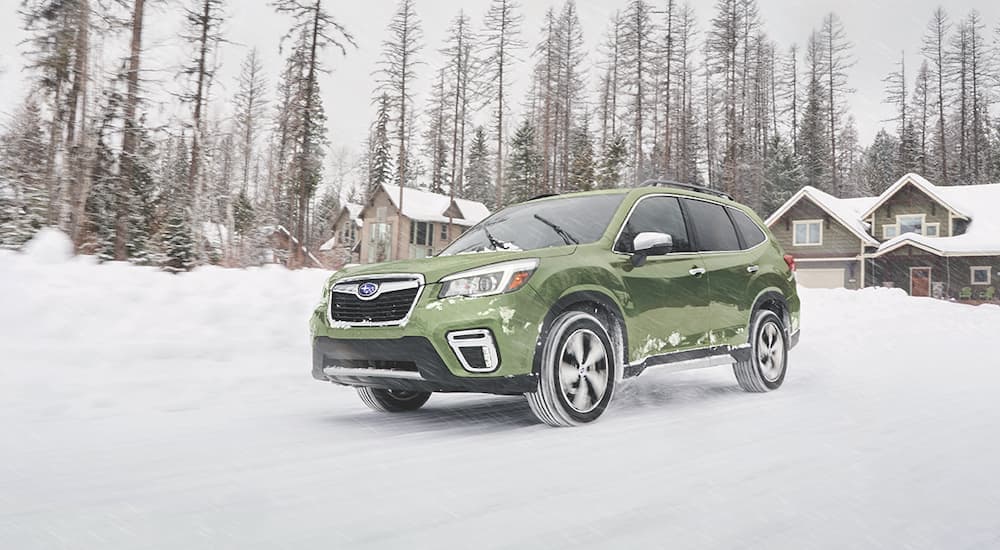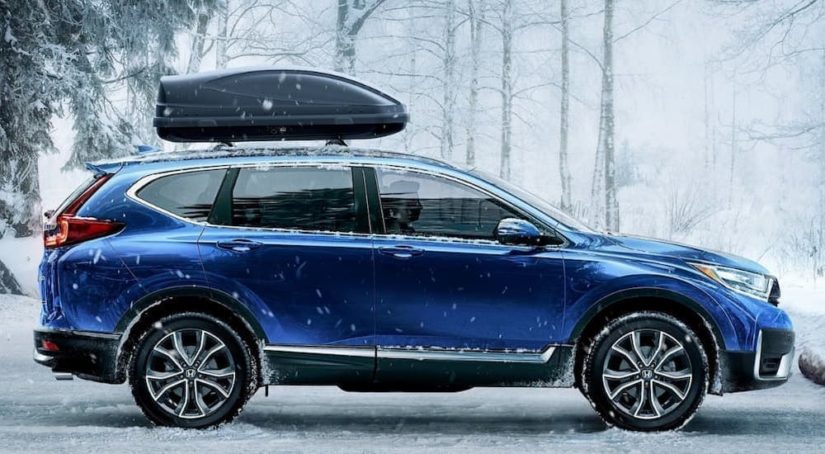As you’re looking to buy a vehicle, you have a lot of decisions to make: one of the most important is choosing between a new, used, and Certified Pre-Owned (CPO) model. Certified Pre-Owned cars offer a fantastic middle-ground between new and used options, allowing you to save money while still getting tremendous peace of mind. In general, manufacturers offer similar features for their CPO programs: thorough inspections, restrictions on the age and mileage of the vehicle, and warranty coverage. But are all of these programs the same?
Despite the surface-level similarities between CPO programs, there are actually some pretty significant differences between them. Today, I’m going to take you through some of the different programs offered by a variety of manufacturers and see how they stack up. For a simple point of comparison, we’ll focus on Honda’s CPO program and compare it to similar programs from other manufacturers like GM, Chrysler, and Subaru. If you’ve been interested in a Honda CPO vehicle, then this will give you a pretty good sense of how they stack up against the competition.
Common Aspects of CPO Programs
Before I start comparing the specific features of CPO programs from different manufacturers, we should look at what they generally have in common. All CPO models have to meet standards set by the manufacturer of that vehicle, which means that car dealerships have to work with a manufacturer to ensure those standards and offer CPO vehicles. That’s why you’ll only find CPO models at a brand-affiliated dealership.
Pretty much all manufacturers have requirements for age and mileage limits on the vehicles that can be sold as CPO to ensure they’re not too old or well-used. Every manufacturer requires an inspection completed by a certified service professional, though the requirements for this inspection can vary from one brand to another (as we’ll see). You pretty much always get a vehicle history report on a CPO model, with CARFAX being the most common option for this.
The major benefit of choosing a CPO vehicle is warranty protection from the original manufacturer, similar to new-car warranty coverage. This means that if you have any issues under warranty, then you’ll be able to get work done with the parts and labor mostly covered. A lot of programs also have additional benefits, such as trial subscriptions for entertainment services and 24/7 roadside assistance – usually for the duration of warranty protection on the vehicle. Altogether, the high standards for CPO models and these benefits can more than justify the higher cost of these vehicles compared to other used cars.
CPO Specs: Honda
Honestly, Honda has one of the best CPO programs in the industry, with high standards and benefits that put some other manufacturers to shame. I don’t know that they’re the absolute best, but they’re definitely up there. One thing to note, however, is that they have two different CPO programs with slight differences between them – specifically the terms of the non-powertrain bumper-to-bumper vehicle warranty. Vehicles that are more than 12 months old or have more than 12,000 miles on them – but fewer than 80,000 miles – are offered as Certified, while those that are less than 12 months old or have fewer than 12,000 miles on them are Certified+.
Here are the benefits for Honda CPO vehicles:
- 7-year/100,000-mile Powertrain Warranty
- Up to 5-year/86,000-mile Limited Warranty
- 182-point Vehicle Inspection
- Roadside Assistance during Warranty Coverage
- Two Complimentary Oil Changes
Most of these benefits are offered for both Certified and Certified+ vehicles – the difference is in terms of the non-powertrain warranty. Certified+ vehicles add onto the original 3-year/36,000-mile new-vehicle warranty with an additional 2 years or 50,000 miles of coverage starting when the original warranty ends. For Certified vehicles, the non-powertrain warranty depends on if the original new-vehicle warranty is still in effect. In either case, the CPO warranty is for 12 months or 12,000 miles, and it starts either when the new-vehicle warranty ends or immediately if the CPO vehicle is sold after the original warranty has expired.

CPO Specs: GM
GM has a more straightforward CPO program since they only have one option, so you don’t have to worry about which bumper-to-bumper warranty you get. These CPO terms are used for most GM vehicles, including Chevy, Buick, and GMC – it’s worth noting that the Cadillac CPO program is similar but with a few differences that I won’t get into here. The benefits for these GM CPO vehicles include:
- 6-year/100,000-mile Powertrain Warranty
- 12-month/12,000-mile Limited Warranty
- 172-point Vehicle Inspection
- Roadside Assistance during Powertrain Warranty Coverage
- Two Complimentary Oil Changes
As you can see, the terms here are very similar to what you can get with a CPO Honda, though there are a few key differences. While the mileage limits are the same on the powertrain warranties, you have an extra year from Honda, which can be important if it takes you longer to hit 100,000 miles. The inspection on GM vehicles also isn’t quite as extensive, and the comprehensive warranty is as good as Honda Certified models but falls well short of what Certified+ vehicles have. Overall, they’re pretty similar, and GM has done a good job delivering a solid CPO program.
CPO Specs: Chrysler
As I was looking at different companies to see how they all compared, I was actually pretty shocked at just how lacking Chrysler’s CPO program really is. It’s important to note that this isn’t just Chrysler – other brands under the Stellantis umbrella, like Jeep, Dodge, Ram, and Fiat, all have this same CPO program. Considering the price tag on Ram trucks and Jeep vehicles, I would expect them to have some of the best CPO terms on the market, but they actually fall way behind GM and Honda. Chrysler CPO features include:
- 7-year/100,000-mile Powertrain Warranty
- 3-month/3,000-mile Limited Warranty
- 125-point Vehicle Inspection
- Roadside Assistance
- No Complimentary Oil Changes
To be fair to Chrysler, they match Honda in terms of the duration and mileage of the powertrain warranty, surpassing GM by one year, which is great. Their full-vehicle warranty, which they call “Maximum Care,” is far less generous and lasts a truly paltry amount of time. Chrysler offers upgrade plans for their warranty coverage, however, which leaves me feeling like the short duration of their vehicle warranty is just a way to sell you better protection. That, combined with the shockingly minimal inspection, leaves the Stellantis brands way behind the competition in terms of their CPO program.

CPO Specs: Subaru
Since Honda is a Japanese brand, it seemed only fair to look at another Japanese auto manufacturer to see if the high level of quality is a hallmark of foreign car companies. Subaru is a very popular company with some of the most reliable vehicles out there, and yet their CPO program is far worse than what Honda has to offer. In fact, they have some of the worst CPO terms I saw when comparing different manufacturers. The benefits of a Subaru CPO include:
- 7-year/100,000-mile Powertrain Warranty
- 152-point Vehicle Inspection
- Roadside Assistance during Warranty Coverage
- Two Complimentary Oil Changes
The good news is that Subaru’s CPO powertrain warranty is on the same level as Chrysler and Honda – so GM seems to be the odd man out. That being said, I didn’t simply miss a line when providing the information above; there is no bumper-to-bumper warranty provided as part of buying a Subaru CPO vehicle. Additional coverage is available at a price, but if you buy a CPO Subaru, you are getting a clearly inferior version of a CPO vehicle – and the vehicle inspection is also pretty lackluster.
Choosing the Right CPO Program
In looking at different CPO programs and comparing them against each other, it became pretty clear that Honda is one of the best out there. It hit every high point across the board: as good a powertrain warranty as you can find, one of the best limited warranties around, incredibly high inspection quality, and additional benefits as-good-as or better than anyone else. If you absolutely don’t want a Honda, then I’m probably not about to change your mind. But if you’ve been interested in a CPO Honda vehicle, then it’s clear that you’re making a great choice.



